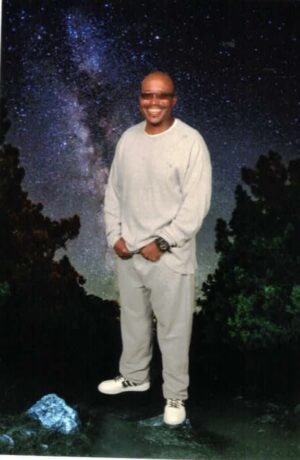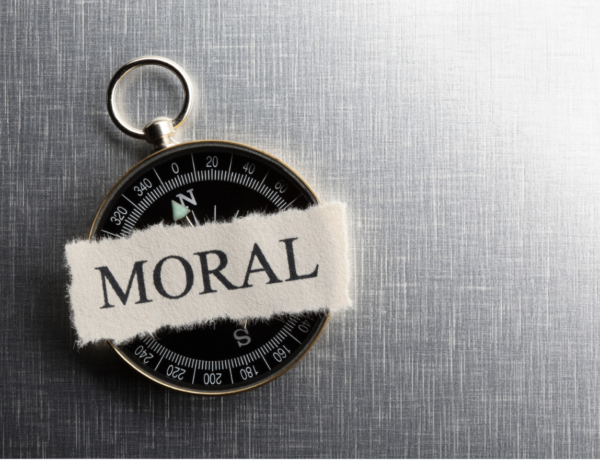The LWOP community here at SATF has become interested in data accountability. Numbers have always been used to justify this nation’s most brutal reforms. Senseless violence was the motivating force. For example, back in the ‘80s and ‘90s, over 300 murders in one year in South Central LA angered the community. Something had to be done. Those numbers were broadcast repeatedly through the media so fear was introduced to that anger and the prison industrial complex expanded on that platform. Those numbers attracted support for the “lock ‘em up and throw away the key” mentality.
Between 1984 and 1997, about 20 new prisons went up across the state even though statistics would later show crime was in a steady decline. The people were screaming for safety-security and the Legislature authored bills that promised to deliver by expanding enhancements, special circumstances, etc. It’s no surprise they had more prison beds than bodies to fill them. Just like it’s no coincidence that the three-strikes law came out in 1994 to fill that void. It was supposed to address violence and the revolving prison door but ultimately it transformed nonviolent, drug-influenced recidivists to a permanent criminal caste which translated into bigger CDCR budgets.
Recidivism has always been up in the 80 percentile range. For decades there was no parole for murderers. There was no data to say whether they could be reformed or not. Recidivism numbers for parolees were used to showcase that criminals couldn’t be rehabilitated, which fostered a normalizing of that worst-of-the-worst mentality. Or, as I like to call it, the Bogeyman fear. That’s what we’re battling inside the community. Some simply haven’t been able to experience the manifestation of restorative justice through the progress we’ve made as human beings.
Herein lies the question: why aren’t the numbers so important/influential now that they support the transformations the very nature of LWOP claimed were impossible for the worst of the worst.
The relevant numbers are:
- 5,200 people are serving LWOP in California.
- Between 2003 and 2016, while violent crime decreased by 26%, the number of LWOPs rose by over 280%.
- Not only has LWOP not resulted in greater community safety, the racial disparities in LWOP have people of color repping at 79% of cases.
- 73% of LWOP sentences are given to people who have never been in trouble with the law.
Since the passage of Senate Bill 394, which made LWOPs under 18 eligible for youth offender parole hearings and the commutation of LWOPs by Gov. Brown, who in his most recent term, commuted 283 people, 52% were LWOPs. Gov. Newsom commuted 78 as of 2020. Over 100 LWOPs have been paroled with no one returning. Recidivism for LWOPs and lifers is under 3%. At no time in CDCR history has recidivism been so low for a group.
Scientific data consistently shows that individuals age or mature out of crime. Even those sentenced to hopelessness like LWOP. By the age of 30 the potential of committing a serious crime drops dramatically. Much of this is due, according to scientists, to profound neurological changes in the prefrontal cortex, which is vital to properly processing childhood traumas. The ability continues to develop until age 26, which establishes a “youth offender” under penal code section 3051(a)(1) & (e).
Sixty-two percent of the 5,200 LWOPs in California were under 26 when they committed their crimes. This makes LWOPs the youngest group in the way of commitment offenses. The Legislature has acknowledged that people who were under 25 should receive special consideration because of the “hallmarks of youth.”
Two California Supreme Court judges, Evans and Liu, and 11 Appellate Court judges have criticized excluding LWOPs from youth offender laws. The established science has consistently demonstrated we lacked the emotional maturity to properly process traumatic childhood experiences — which diminishes culpability — yet LWOPs are still being denied any meaningful opportunity to be recognized for rehabilitation.
There’s been an ongoing debate in the criminal justice arena about LWOP reform. Some believed we could be rehabilitated. Others felt that if given the right opportunity we’d morph back into that criminal-thinking behavior. LWOPs have been peacefully programming on medium-security Level 2 facilities for over five years now. This has been one of the CDCR’s biggest tests to see if we could adjust to conditions completely out of sync with that maximum security Level 4 mentality. The thought was if we couldn’t endure in this dorm setting after decades in a cage, there was no way we’d be able to reintegrate back into society. This is the closest LWOPs have been with inmates who have a completely different code of ethics.
This proves LWOPs are not institutionalized. There are close to 150 LWOPs here on B facility programming with no gun coverage or constant staff supervision. Because of positive behavioral score numbers, the CDCR voluntarily removed the permanent threat risk assessment that isolated us to maximum security status. The CDCR has finally acknowledged a change so significant in the LWOP population from sending us to Level Twos translated into them knowing, from all the positive numbers, that they were no longer housing the worst of the worst.
To date, there have been zero racial incidents that became violent. There are conflicts among us that we’ve learned how to settle as mature adult males without violence being the only consequence. We’ve mastered the art of conflict resolution. It took a long while but we’ve finally realized that talking and listening is the antidote to the blade or bullet. LWOPs lead the population in the vocational trade certifications, GED completions, college degrees, and 90% of facilitators, mentors, and tutors are LWOPs.
LWOPS have successfully and safely reintegrated back into society and onto these medium-security Level Two yards with no violence to date. It seems like the lawmakers are ignoring these facts. The numbers that showcase our reform in its authenticity are not being considered. The Hardin decision was a blow to overall morale and the movement. Not because it didn’t go as we expected but the state’s highest court left it up to the Legislature to make a bill lifting the exclusion of LWOPs from the youth offender law (allowing LWOPs to go to board after 25 years). That decision came out in March. To date, we’ve seen no effort in that regard.
In fact just yesterday the Legislature failed to pass SB 94. This bill was for LWOPs arrested before 1990. They represented 500 of the 5,200. These guys have been incarcerated for 35 to 40 years and still no consideration of those numbers favoring reform. What more can we do to demonstrate we’ve gone through the painstaking process of self-development? Maybe our positive behavior simply isn’t enough. Maybe we’re not using the correct jargon. Usually when I speak to the spirit of the spiritual-religious community I speak through the story of Paul. He became one of God’s most faithful servants. People seem to forget the deeper meaning in the moral of that story. Paul was once Saul, the Christian killer, before his transformation on the road to Damascus. God was showing that horrible acts did not permanently subjugate one to irredeemable status. He was able to change or forgive the worst of the worst, which resulted in Paul being an example of a shift in ideology (criminal thinking or behavior) which motivated him to be of service to others as the epitome of God’s grace and our ability to change.
I guess if I’m talking to the lawmakers I use the constitution as a reference point. When it was written, the phrase, “All men are created equal,” meant the white man. Over the years this evolved in sync with society’s moral advancements to include women, minorities, the LGBTQ community, etc. I mean, if the Constitution and the states can mature (allowing women to vote, freeing slaves, same-sex marriage), why is it so hard to accept that ability in people?
Since the courts around the world and from Oregon to Massachusetts have all accepted the scientific data that brains don’t fully develop until 26 as law, LWOPs are not making a claim of entitlement to any relief, we are simply asking to be treated in accordance to the law in penal code section 3051 (A)(1) & (e) which states that people under 26 are youth offenders because the prefrontal cortex — which is vital to properly processing childhood trauma — isn’t fully developed until that age.
To continue to exclude LWOPs from parole consideration is not only against the law, it violates the basic tenets that establish the foundation of our humanity. The pain and suffering we cause the community will forever torment who we are today with the shame and regret of who we were yesterday. I’ve been incarcerated for 30 years. I’m not the same person at 48 that I was at 18. If I have to live the rest of my life the way I’ve existed these decades I prefer the treatment animals are afforded when they can no longer enjoy a certain quality of life. There’s no humanity in a sentence that denies our innate ability to completely transform through mental, emotional, and spiritual reawakening.
It’s only logical that if the community had the voice to lock us up for our callous disregard for human life back then — which we deserved — their voice should carry the same weight now that they are welcoming LWOPs back with open arms. The lawmakers are supposed to serve the will of the people and not following the law or the community’s desire to set us free is in opposition to that service. I mean, 20 years ago, I was a danger to myself and the community. I deserved nothing less than the firing squad. With my GED, I need four more classes to get my associate of arts degree in communications, and I’m one book away from being a certified HVAC technician. This makes me an asset to the community, not some threat to die in here like I have nothing to offer.





No Comments